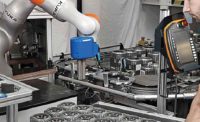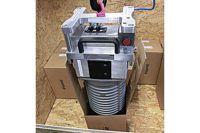Times were tough for the Timken Co. at the start of the 21st century. In March 2000, the Canton, OH-based manufacturer of antifriction roller bearings and related components announced plans to cut 600 jobs worldwide—after having trimmed 1,700 jobs in the previous two years. It also closed plants in Australia and England, and was relying more heavily on sources of steel outside the United States.
One decade later, in 2010, company managers undertook another major initiative. They decided to re-evaluate the ergonomics process of each job, and where necessary, improve it to enhance worker safety and performance. Six years later, the company’s fortunes have turned around, and its incidence rate of injury and illness is at an all-time low.
“Knowing which jobs to fix first [was] half the battle,” says Robert Scott, principal ergonomics engineer at Timken. “Now that we’ve eliminated or reduced all the easy risks, we are focused on high-priority jobs that require us to reduce present musculoskeletal disorder (MSD) risks. A prioritized list helps keep things on track.”
Improving worker ergonomics is a two-step process for Timken. Step one is to use Humantech Inc.’s Ergonomics Hit List informational materials to determine the ergonomic risks of each job. When that is complete, the company works to eliminate these risks by implementing the Humantech System. This system integrates learning (online), doing (hands-on) and managing (data and reporting), so assemblers and production employees always perform their work ergonomically.
There are seven interactive online training modules that cover everything from ergonomic principles to design guidelines. Managers choose the modules that are appropriate for their teams.
The hands-on portion involves Timken employees working alongside Humantech certified professional ergonomists to hone their job skills. Each worker’s MSD risks and quality of work are assessed during this phase. Afterward, workers learn how much they’ve reduced their MSD risks and receive action plans with email reminders to maintain this safety level.
Part three of the system enables managers to easily monitor the activities of each worker and the status of team improvement plans. Managers can also generate risk maps that prioritize jobs by department, site, business unit or enterprise; and reports to track the status of improvement plans for an individual job, plant or company.
According to Scott, each of Timken’s 34 plants (located in 11 countries) is required to reduce its ergonomics risk factors by 20 percent annually. To help meet this goal, Timken required each plant to develop and implement at least three innovative improvements in 2015. Scott says plant managers completed more than 200 assessments last year and have implemented 142 improvements.
“These projects must reduce ergonomic risk and produce cost savings,” explains Scott. “But, [they] often [also] improve associate morale, attendance, product quality and return on investment.”
In 2014, Timken split into two companies. The Timken Co. continues to manufacture roller bearings, while TimkenSteel produces steel. That same year, Timken posted $3.1 billion in sales and had more than 14,000 employees working in 30 countries.
Humantech is a consulting firm that specializes in ergonomics training, assessments, software and program development. For more information on ergonomic assessment tools, call 734-663-6707 or visit www.humantech.com.








